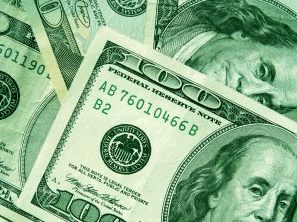Lender of Last Resort
by Brandon Fuller Rising foreclosures among homeowners with subprime mortgages led to unusually tight credit conditions in the banking system last week. Banks became reluctant to provide routine short-term loans to one another for fear that a borrowing bank's balance sheet would be too heavily concentrated in shaky subprime loans. When banks are reluctant to lend to each other, they tend to make fewer loans to businesses and households. Liquidity—the ease with which banks lend to creditworthy costumers and institutions—began to dry up. On August 17, the Fed entered the fray.
Rising foreclosures among homeowners with subprime mortgages led to unusually tight credit conditions in the banking system last week. Banks became reluctant to provide routine short-term loans to one another for fear that a borrowing bank's balance sheet would be too heavily concentrated in shaky subprime loans. When banks are reluctant to lend to each other, they tend to make fewer loans to businesses and households. Liquidity—the ease with which banks lend to creditworthy costumers and institutions—began to dry up. On August 17, the Fed entered the fray.In two press releases (here and here), the Fed acknowledged that recent reluctance to lend posed a threat to economic growth, and in a rare move, it encouraged banks with limited credit access to borrow directly from the Fed by lowering the discount rate. The discount rate is the interest rate at which banks borrow from the Fed. The Fed typically sets the discount rate 100 basis points (1 percentage point) above the rate at which banks lend to one another (the federal funds rate). On August 17, the Fed narrowed the spread between the discount and federal funds rates to 50 basis points—thereby reducing the penalty associated with borrowing from the Fed.
By lowering the discount rate, the Fed was fulfilling its function as the lender of last resort. To see why the Fed stepped in, it helps to consider how subprime fears might affect the availability of loans for creditworthy borrowers. Banks, especially large ones, often borrow in order to meet the Fed's reserve requirement (the fraction of the bank's deposits that must be held in reserve rather than being lent out). Without knowledge of which big banks will be affected by subprime foreclosures, other banks that would typically lend some of their excess reserves to big banks at the federal funds rate will be reluctant to do so. If large banks that are short on required reserves find it difficult to borrow reserves in the federal funds market, they will be forced to call in loans, and they'll be hesitant to make any further loans. If banks call in loans and hesitate to lend to even creditworthy people and businesses, loan-dependent consumption and investment spending will fall, leading to slower economic growth, or worse, recession.
By reducing the discount rate, the Fed hopes to increase liquidity in financial markets by making it easier for banks to obtain short-term loans. If the policy works, creditworthy borrowers will not have any trouble obtaining loans for houses, cars, factory expansions, office buildings, and the like. As the subprime crisis subsides, regular credit conditions should prevail and the Fed will be able to return the spread between the federal funds rate and discount rate to its initial value of 100 basis points. If the credit crisis persists in spite of the discount rate move, the Fed will have to take stronger action. Read a recent Bloomberg column by John Berry to find out more.
Discussion Questions
1. In times of financial crisis, the Fed functions as a lender of last resort. More typically, the Fed's role is one of economic stabilization—maintaining low and stable inflation as well as full-employment output. How does the Fed's discount rate decision help it to fulfill its roles as lender of last resort and economic stabilizer?
2. Berry's column mentions "moral hazard" several times. In what way does the Fed's discount rate decision risk moral hazard?
3. Fears about losses from assets backed by subprime mortgages were at the root of much of the financial turmoil of recent weeks. According to Berry's column, how do the estimated losses from the default of subprime borrowers compare to the total assets of the U.S. and Euro-area banking sectors?
4. If the credit crisis continues and economic growth suffers, how might the Fed respond?
5. According to Berry, "…growth may have been damaged even if [credit] markets do settle down relatively soon." How would a temporary credit crisis damage economic growth? Consider the links between lending, housing prices, household wealth, and consumption, as well as the link between lending and investment.
Labels: Global Economic Watch, Interest Rate, Monetary Policy, Moral Hazard



1 Comments:
At 1:35 PM, August 22, 2007, William Chiu
said…
William Chiu
said…
Citigroup, JPMorgan Chase, Bank of America, and Wachovia each borrowed $500 million from the Fed's discount window. The move is said to be symbolic that borrowing from the Fed is NOT a sign of weakness.
Post a Comment
<< Home